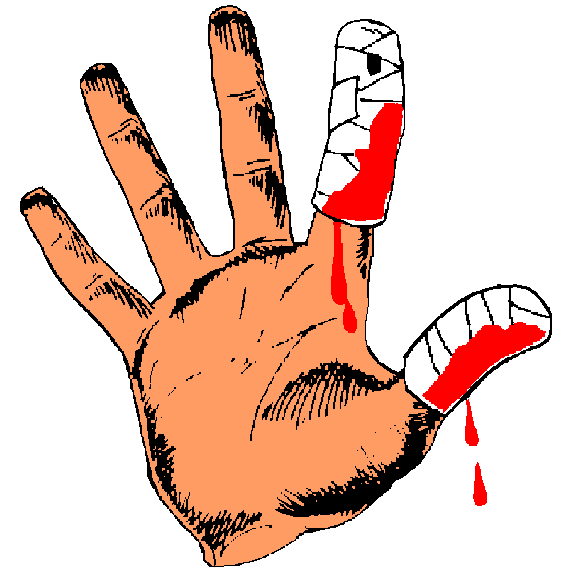 The overlapping and often conflicting requirements of ADA, FMLA, Workers’ Comp and a plethora of state laws are an administrative nightmare. There are differences in eligibility, leave lengths, job reinstatement requirements, access to medical information, fit-for-duty certifications and so on. More than one law can affect the same situation and each must be considered. For this reason, a “silo” structure in which separate areas manage Workers’ Compensation, disability and health can be problematic, inefficient and duplicitous. Yet,at the same time, this quagmire adds to the challenge of integrating occupational and non-occupational RTW. Ultimately, the entire organization is responsible for the knowledge possessed by any part of the organization and an employer needs to determine the best process for its needs and circumstances.
The overlapping and often conflicting requirements of ADA, FMLA, Workers’ Comp and a plethora of state laws are an administrative nightmare. There are differences in eligibility, leave lengths, job reinstatement requirements, access to medical information, fit-for-duty certifications and so on. More than one law can affect the same situation and each must be considered. For this reason, a “silo” structure in which separate areas manage Workers’ Compensation, disability and health can be problematic, inefficient and duplicitous. Yet,at the same time, this quagmire adds to the challenge of integrating occupational and non-occupational RTW. Ultimately, the entire organization is responsible for the knowledge possessed by any part of the organization and an employer needs to determine the best process for its needs and circumstances.
Tag: workers compensation
Three ways to control workers’ compensation loss costs
 Cost control and injury management are the basic yet most important management programs that can impact workers’ compensation loss costs. Focusing efforts on prompt claim reporting, controlling medical costs and having a plan to get injured employees back to work as quickly as possible can have an impact on controlling your workers’ compensation claim costs.
Cost control and injury management are the basic yet most important management programs that can impact workers’ compensation loss costs. Focusing efforts on prompt claim reporting, controlling medical costs and having a plan to get injured employees back to work as quickly as possible can have an impact on controlling your workers’ compensation claim costs.
- Report claims promptly – The prompt reporting of employee injury claims can be one of the most effective tools in controlling worker’s compensation costs.
- Utilize network medical providers – According to current NCCI data, medical costs represent 58% of workers’ compensation claim 120% costs. Utilizing network providers is a critical step in controlling your medical costs.
- Plan for return-to-work with a well-engineered process – An important tool for controlling claim costs is an effective return-to-work process. Lost time or indemnity cases have the highest percentage of uninsured indirect costs.
Bloodborne Pathogens and Needlestick Prevention
 What are bloodborne pathogens?
What are bloodborne pathogens?
Bloodborne pathogens are infectious microorganisms in human blood that can cause disease in humans. These pathogens include, but are not limited to, hepatitis B (HBV), hepatitis C (HCV) and human immunodeficiency virus (HIV). Needlesticks and other sharps-related injuries may expose workers to bloodborne pathogens. Workers in many occupations, including first aid team members, housekeeping personnel in some industries, nurses and other healthcare personnel may be at risk of exposure to bloodborne pathogens.
via Safety and Health Topics | Bloodborne Pathogens and Needlestick Prevention.
Seven Common Accident Causes
 Consider this statistic: 80 out of every 100 accidents are the fault of the person involved in the incident. Unsafe Acts cause four times as many accidents & injuries as unsafe conditions.
Consider this statistic: 80 out of every 100 accidents are the fault of the person involved in the incident. Unsafe Acts cause four times as many accidents & injuries as unsafe conditions.
Accidents occur for many reasons. In most industries people tend to look for “things” to blame when an accident happens, because it’s easier than looking for “root causes,” such as those listed below. Consider the underlying accident causes described. Have you been guilty of any of these attitudes or behaviors? If so, you may have not been injured-but next time you may not be so lucky.
- Taking Shortcuts: Every day we make decisions we hope will make the job faster and more efficient. But do time savers ever risk your own safety, or that of other crew members? Short cuts that reduce your safety on the job are not shortcuts, but an increased chance for injury.
- Being Over Confident: Confidence is a good thing. Overconfidence is too much of a good thing. “It’ll never happen to me” is an attitude that can lead to improper procedures, tools, or methods in your work. Any of these can lead to an injury.
- Starting a Task with Incomplete Instructions: To do the job safely and right the first time you need complete information. Have you ever seen a worker sent to do a job, having been given only a part of the job’s instructions? Don’t be shy about asking for explanations about work procedures and safety precautions. It isn’t dumb to ask questions; it’s dumb not to.
- Poor Housekeeping: When clients, managers or safety professionals walk through your work site, housekeeping is an accurate indicator of everyone’s attitude about quality, production and safety. Poor housekeeping creates hazards of all types. A well maintained area sets a standard for others to follow. Good housekeeping involves both pride and safety.
- Ignoring Safety Procedures: Purposely failing to observe safety procedures can endanger you and your co-workers. You are being paid to follow the company safety policies-not to make your own rules. Being “casual” about safety can lead to a casualty!
- Mental Distractions from Work: Having a bad day at home and worrying about it at work is a hazardous combination. Dropping your ‘mental’ guard can pull your focus away from safe work procedures. You can also be distracted when you’re busy working and a friend comes by to talk while you are trying to work. Don’t become a statistic because you took your eyes off the machine “just for a minute.”
- Failure to Pre-Plan the Work: There is a lot of talk today about Job Hazard Analysis. JHA’s are an effective way to figure out the smartest ways to work safely and effectively. Being hasty in starting a task, or not thinking through the process can put you in harms way. Instead, Plan Your Work and then Work Your Plan!
“It is better to be careful 100 times than to get killed once.” (Mark Twain)
